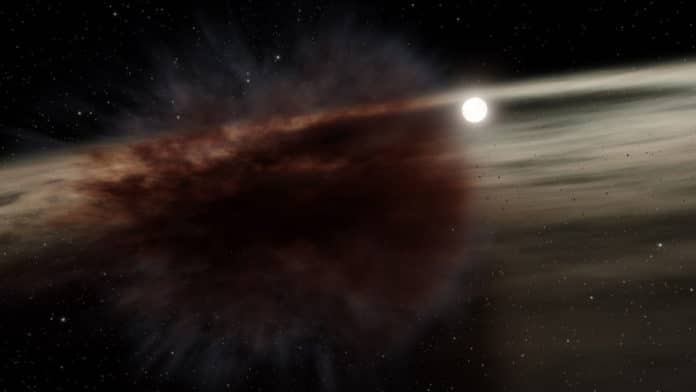Most planets and satellites in the solar system were formed after the collision. By colliding together, these bodies throw out more material of different sizes.
In a new study, a group of astronomers led by Kate Su of the University of Arizona reports the first observations of a debris cloud from one of these collisions. The study offers essential details about smashups.
The debris cloud was found to pass in front of its star and briefly blocked the light. This phenomenon is known as a transit. Determining the size and brightness of the star helped scientists ascertain the size of the cloud shortly after impact, estimate the size of the objects that collided, and watch the speed with which the cloud dispersed.
George Rieke is also at the University of Arizona and a co-author of the new study. said, “There is no substitute for being an eyewitness to an event.”
In early 2015, scientists routinely observed a ten million-year-old star called HD 166191. During the early time in a star’s life, dust left over from its formation has clumped together to form rocky bodies called planetesimals. Planetesimals are the seeds of future planets.
Once the gas that previously filled the space between those objects has dispersed, catastrophic collisions become common.
The team used Spitzer to conduct more than 100 observations of the system between 2015 and 2019 in the hope of finding evidence of the collisions. Even though the planetesimals are too small and distant to resolve by telescope, their smashups produce large amounts of dust.
In mid-2018, the star was found to become significantly brighter. It indicates increased debris production. The telescope detected a cloud of debris blocking the star at that time. Combining Spitzer’s observation of the transit with observations by telescopes on the ground, the team could deduce the size and shape of the debris cloud.
Over the next few months, the large dust cloud grew and became more translucent. This signified the quick dispersion of the dust and other debris. By 2019, the cloud that passed in front of the star was no longer visible, but the system contained twice as much dust as it had before Spitzer spotted the cloud.
Journal Reference:
- Kate Y. L. Su et al. A Star-sized Impact-produced Dust Clump in the Terrestrial Zone of the HD 166191 System. DOI: 10.3847/1538-4357/ac4bbb
